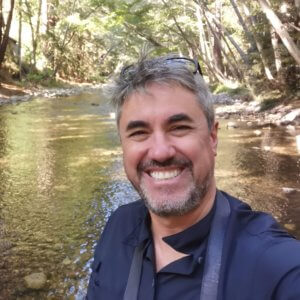President’s Desk: Scientists and Technologists: Pillars of Community Support
BY JOAQUIN RAMIREZ
The 2023 International Wildland Fire Conference was an immense success. We convened 1,600 attendees from around the globe in the welcoming city of Porto, were everyone enjoyed the legendary Portuguese hospitality. IAWF was part of the conference for the first time as an institutional partner, and we also enjoyed a social event and the IAWF awards ceremony.
Our focus centered on the challenges inherent in the development of a global risk governance framework. Robust discussions enriched the conference, and you can explore a plethora of results and testimonials on the conference’s excellent website, www.wildfire2023.pt.
The stark reality of these challenges is reflected in the 2023 Canadian fire season, which set new records early in the season. The statistics are staggering, swiftly becoming outdated as the magnitude of the crisis escalates. This situation is hard to fathom for anyone outside the dedicated fire community battling these raging fires. Efforts are supported by global collaboration aiming to mitigate the catastrophic impact on the stressed boreal forests stretching from the North American coast to coast. We’re reminded of the vast repercussions of such massive emissions and smoke exposure on everyone involved, from firefighters and citizens to rural, Indigenous communities, and the urban dwellers in places like Union Square and other big cities on the Eastern North American Coast.
In the face of such extraordinary events, it becomes evident that a collective effort is necessary to seek sustainable solutions to these challenges. Our community must take the lead in finding scientifically based, culturally sensitive strategies for long-term planning.
This brings me to my applied fire science triangle, a model that emphasizes the vital roles played by three key actors in addressing this complex problem.
The scientific wildland fire community, despite being severely underfunded, persistently strives to answer pressing questions; these range from studying the microscale of plant physiology to understanding the macroscale of regional landscapes, from analyzing combustion in wildlandurban interface environments to intricate fireweather interactions. The scientific community retrospectively investigates thousands of years of fire history while also projecting future scenarios using climate change models, which are becoming ever more crucial for understanding the pace of change we are facing. Scientists are responsible for evaluating the physical and mental health implications on firefighters and the public while driving advances in social sciences to help build resilient societies.
The users’ community, which includes practitioners of risk prevention and proactive fire fighting, requires solutions that meet their needs. Technology alone isn’t enough; science and technology should serve as reliable, highperforming, accessible tools that enhance their capabilities, cater to local cultural contexts, and ultimately improve their work’s effectiveness.
Technologists are the third and sometimes overlooked part of this team. They bridge the gap between scientists and end users, prioritizing needs, facilitating data, and providing materials to create tools that become as indispensable as a firefighter’s Pulaski. Technologists work on myriad solutions from improved personal protective equipment, novel materials for protection, enhanced tools and techniques for prescribed burns and vegetation management, modeling and situational awareness applications for increased safety and operational response, to remote sensing technology for real-time incident monitoring. Beyond that, technologists provide the necessary training and support to effect change within organizations, transforming individual experiences that can be lost after retirement, into institutional wisdom.
In this magazine, on our portals (wildfiretoday.com and fireaviation.com), and during IAWF events, you’ll find many such dedicated technologists and companies striving to offer affordable, actionable solutions that enhance our challenging roles. Engage with them, share your needs and feedback. Your voice, as part of the user community, is vital in guiding the advancement of science and technology that can effect meaningful change today. It is an allhands effort, and we need to progress together.

Joaquin Ramirez Cisneros is a wildland fire technologist who has been working for the last 25 years to bridge the gap between scientists and end users. In 2013, Ramirez moved to San Diego from Spain, and now works with agencies worldwide trying to convert the best science into actionable tools. Ramirez is the creator of several of the most advanced fire behavior software model implementations and decision support systems, including the Wildfire Analyst and fiResponse software tools. Since 2011, Ramirez has co-ordinated the first European M.S. in Forest Fires (www.masterfuegoforestal.es) with Prof. Rodriguez Francisco y Silva (UCO) and Prof. Domingo Molina (UdL). Ramirez is a founder and active member of the Pau Costa Foundation. He earned his PhD in remote sensing and GIS at the University of Leon in 2003, an M.S. in forestry from the University of Lleida, and his B.S. in forest engineering from the Polytechnical University of Madrid, Spain.
